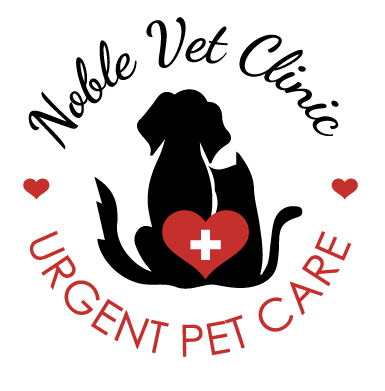| We offer emergency and urgent care. We are more reasonable than the ER. We are faster than the ER. Guaranteed! |

Noble Vet Clinic36 Barnes Ct.Hayward, CA 94544(510) 537-3292 |
Noble Veterinary Clinic
(510)703-0319
www.noblevet.com
FLEA CONTROLProblems caused by fleas: 1. Flea allergy dermatitis results form hypersensitivity to flea saliva and can be a chronic and frustrating problem in both dogs and cats. 2. Fleas can cause anemia which can be fatal in very young or in elderly animals. 3. Fleas are capable of transmitting infectious diseases.
Guidelines for flea control: 1. Treatment of both the environment and the pets is essential 2. Flea eggs fall off pets in the home and yard environment. Most (95%) of the flea population exists in the immature egg, larval
INDOOR ENVIRONMENT Vacuum carpets and mop floors thoroughly (Fleas will infest home with wood floors. Carpeting is not essential). Discard the vacuum bag after use. Up to 20% of flea larvae and 50% of flea eggs can be removed in this manner. Wash pet beds, bedspreads, etc. Apply an effective premise spray or foggers to the entire house, including on and under furniture. Products used should contain an IGR (insect growth regulator) such as methoprene or fenoxycarb. IGR’s mimic the juvenile hormone of the flea, preventing the larvae from developing into adults. They are inert and non-toxic to mammals. Permethrin is a synthetic derivative from the Chrysanthemum flower and has extremely low potential toxicity compared to other agents. Microencapsulated time-release sprays containing the pesticide Dursban are also effective. The entire process must be repeated in two weeks in order to arrest the entire life cycle of the flea. Flea pupae are protected by their outer cocoon and are unaffected by the above treatments. They emerge as adult fleas within two weeks. After the first two applications, the process should be repeated at one to two month intervals as needed. Homes with wall-to-wall carpeting may be treated with specific inert powders which are toxic to flea larvae but are non-toxic to humans or animals.
ANIMALS Appropriate adulticide treatment = Comfortis, Revolution, Capstar at prescribed intervals reduce reinfestation of the environment. Fleas may reinfest your pet rapidly unless the home environment has been treated for all life stages of the flea. We do not recommend Advantage or Frontline any more as they don't seem to be effective. Apply a permethrin or pyrethrin repellent once or twice weekly. The newest products also contain methoprene to inhibit the development of eggs and larvae. Flea comb cats frequently. After each stroke, deposit the residue in a jar or alcohol, flea spray or soapy water. Current products have very low toxic potential, but read all labels before applying a product. Signs of toxicity include vomiting, diarrhea, incoordination, rapid respiration, salivation and muscle tremors. If you suspect a toxic reaction, bathe your pet to remove the product and call the veterinary clinic. Despite your best efforts, your pet may itch excessively due to flea allergy dermatitis, secondary bacterial skin infection or other allergies. After examining your pet, the veterinarian will prescribe appropriate therapy utilizing anti-inflammatory agents, therapeutic shampoos, nutritional therapy, etc.
OUTDOOR ENVIRONMENT Flea eggs and larvae will accumulate in areas frequented by the pet, particularly areas protected from sunlight. Treatment should be directed toward sleeping areas, lawns, steps, paths, under decks, etc. If your pet travels in the car, treat the car with a premise spray. Treatment of outdoor areas with a dilute mist of malathion (8TBSP/gallon water) is very effective for killing fleas. Application should occur after sunset to avoid exposure to birds or bees. The short duration of action, selective toxicity, instability in the presence of sunlight and moisture, and low cost make malathion one of the more acceptable products for outdoor treatment. Application should be repeated after two weeks. Pets should be kept out of the yard overnight after treatment. Parasitic nematode sprays may be effective if soil temperatures remain above 55?F and the yard is watered regularly. Under ideal conditions, the nematodes parasitize flea larvae and pupae for three weeks, but our environment is not ideal for nematode survival. |